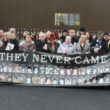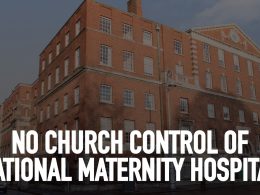On this day one hundred years last Friday – September 20, 1913 – Dublin City and parts of the county is in the throes of a desperate crisis. What can only be described as a full scale class war is underway as the city’s capitalists set out to crush the demands of workers who have the temerity to demand better wages, improvements in the grinding conditions imposed on them in their workplaces and the right to join a trade union of their choice.
The past three weeks have seen dramatic events on a scale never before witnessed in the long history of Dublin city, at least not since the battle of Clontarf nine centuries earlier! This stirring episode is chronicled in great detail in a book by journalist Padraig Yeates. Meticulously researched his book – Lockout, Dublin 1913 -is a veritable encyclopedia of the greatest and most intense struggle between capital and labour in the history of the Irish nation. Some of his political analysis on the significance and meaning of the struggle that was waged by the Dublin working class I disagree with, however, and the Socialist Party presents an alternative analysis in a new book just published, Let Us Rise.
The most intense phase of the Lockout saga began, of course, on Tuesday, August 26 when hundreds of trams drivers and conductors began a strike by abandoning their trams wherever they happened to be at the appointed time. This was the first spark that fell on the powder keg that was the pent up social tensions in Dublin city. The following days saw more sparks as striking workers and their supporters clash with tram workers who continued to work. But by Saturday evening simmering tensions erupted in a massive explosion.
Clashes between police and working class demonstrators began in the Ringsend district and spilled over all the way to the city centre. Tram company owner and bosses’ leader William Martin Murphy had secured commitments from the forces of the State that they would stand by him in the event of a strike. That guarantee was sealed in blood later on Saturday night when the forces of the Dublin Metropolitan Police and the Royal Irish Constabulary fell on protesting workers around Liberty Hall, the headquarters of the ITGWU.
The ferocity of this attack was relayed by the Sunday newspapers and notably the Evening Telegraph related how, ‘Evidence of the fierceness of the encounters with the police were to be seen along Eden Quay in the pools of blood and smears of dry blood on the roads and footpaths.’ Two workers who were not threatening the police were the most tragic victims of the night. James Nolan was attacked on Eden Quay and John Byrne on Burgh Quay just across the Liffey. Their skulls were crushed by savage baton blows wielded by DMP thugs and they died later. Witnesses later recounted the savagery of the attack on the two defenceless men and that some of the police were drunk.
The next day, Sunday, September 31, has long been embedded in the folklore of the nation as Bloody Sunday when the police force indiscriminately ran riot in a crowded O’Connell St and left hundreds of uninvolved strollers and bystanders seriously wounded. An even worse outrage was perpetrated that night when a gang of DMP invaded a poverty stricken flats complex and laid waste to what little the residents had in their homes and assaulted any they could get their hands on including a disabled man, John McDonagh who subsequently died.
The solidarity that existed among the Dublin workers and their communities in face of the war unleashed against them was evident at the funeral of James Nolan on Wednesday, September 3. At least ten thousand marched in his funeral cortege with striking tram workers in uniform and locked out women workers from Jacobs biscuit factory. But just how deep the social fissures ran was seen a week later when students in the national schools around Dublin city centre went on strike, refusing to use schoolbooks that were produced or supplied by companies that were locking out workers!
The events occurring over the Autumn of 1913 in Dublin is a highly engrossing saga. It will be a real pity if people all over the country do not take advantage of the many events that have been organised to mark the centenary and read the many articles written often with great reproductions of the dramatic photographs from most stunning events. This is a period in our history that has shaped many aspects of the Free State and the Republic that followed and lay the basis for many of the workers’ rights that were won subsequently. But what is most impressive is the incredible spirit of solidarity among those who had the least in pursuit ,as a class, of a decent future.












